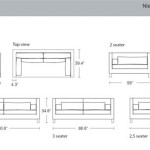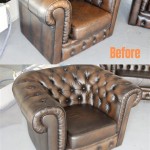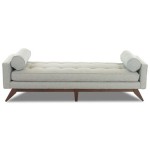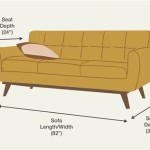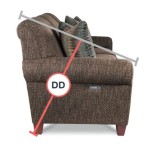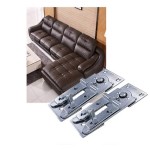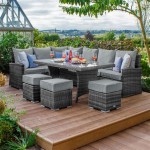Fabric Yardage for Sofa Slipcover: A Comprehensive Guide
Determining the correct amount of fabric needed for a sofa slipcover is a critical step to ensure a successful and aesthetically pleasing final product. Underestimating the required yardage can lead to a slipcover that is too small, necessitating additional purchases and potentially impacting the overall design. Conversely, overestimating can result in unnecessary expenses and wasted material. This article provides a comprehensive guide to calculating fabric yardage for a sofa slipcover, covering various factors that influence the estimation and offering practical advice for accurate measurements.
The process of calculating fabric yardage involves a combination of measurements, pattern considerations, and fabric characteristics. It is not a one-size-fits-all approach, as different sofa styles, fabric widths, and slipcover designs will impact the required yardage. A thorough understanding of these variables is essential for achieving a precise estimation.
Understanding Key Measurements for Yardage Calculation
The foundation of accurate fabric yardage calculation lies in precise measurements of the sofa. These measurements serve as the basis for determining the amount of fabric needed to cover each section of the sofa, including the back, seat, arms, and any additional cushions or features. Neglecting even a small measurement can lead to inaccuracies in the final yardage estimate.
The first crucial measurement is the overall width of the sofa, taken from the outermost points of the arms. This measurement determines the width of fabric needed for the back and seat sections. It is advisable to take this measurement at both the top and bottom of the sofa back, as variations in shape can affect the required fabric width. Record the larger of the two measurements.
Next, measure the overall depth of the sofa, from the front edge of the seat cushion to the back of the sofa. This measurement is essential for calculating the fabric needed for the seat and back sections. Similar to the width measurement, ensure accuracy by measuring at different points along the seat depth, accounting for any curves or variations in shape. Again, record the largest measurement found.
The height of the sofa back, from the seat level to the top of the back, is another critical measurement. This measurement directly influences the fabric needed for the back section of the slipcover. If the sofa has a curved or angled back, measure the height at the tallest point to ensure sufficient fabric coverage.
Measurements of the sofa arms are also necessary. Measure the height, width, and depth of each arm individually. Note any differences between the arms, as these differences will need to be accounted for in the fabric cutting and sewing process. If the arms have a complex shape, consider creating a paper template to accurately represent the shape and dimensions.
Finally, measure the dimensions of any cushions that will be covered with the slipcover. This includes both seat cushions and back cushions. Measure the length, width, and thickness of each cushion. If the cushions have a unique shape, such as a T-cushion, carefully measure all relevant dimensions to ensure a proper fit. It is also important to consider whether the cushions are reversible, as this will affect the amount of fabric needed.
Document all measurements clearly, using a consistent unit of measurement such as inches or centimeters. Creating a detailed diagram of the sofa with labeled measurements can be helpful in visualizing the project and ensuring that all necessary dimensions are accounted for. It is also prudent to add a few extra inches to each measurement to allow for seam allowances and potential errors during the cutting and sewing process.
Factors Influencing Fabric Yardage Calculation
Beyond the basic sofa measurements, several other factors significantly impact the amount of fabric required for a slipcover. These factors include fabric width, repeat patterns, nap, and the complexity of the slipcover design. Understanding these influences is crucial for accurate yardage estimation and minimizing fabric waste.
Fabric width is a primary determinant of the required yardage. Fabrics are typically available in widths ranging from 45 inches to 120 inches or more. Wider fabrics generally require less yardage, as fewer seams are needed to cover the sofa. When calculating yardage, always use the actual usable width of the fabric, which may be slightly less than the stated width due to selvages or imperfections along the edges. For instance, a fabric labeled as 54 inches wide may only have 52 inches of usable width.
Fabrics with repeat patterns, such as stripes or floral designs, require extra consideration. To ensure that the pattern is aligned seamlessly across the slipcover, additional fabric must be purchased to match the pattern repeats. The larger the pattern repeat, the more fabric will be needed. To accurately calculate the additional yardage required, determine the vertical and horizontal pattern repeats of the fabric. Then, plan the layout of the pattern on the sofa sections, ensuring that the pattern aligns at seams and that there are no abrupt or jarring transitions. This often involves purchasing extra fabric to allow for cutting and adjusting the pattern placement.
Fabrics with nap, such as velvet or corduroy, have a directional pile or texture that can affect the appearance of the slipcover. To ensure a uniform look, all pieces of the slipcover must be cut with the nap running in the same direction. This can significantly increase the required yardage, as it may not be possible to efficiently nest pieces together to minimize fabric waste. When working with nap fabrics, it is essential to plan the layout carefully and to allow for extra fabric to accommodate the unidirectional cutting requirement.
The complexity of the slipcover design also influences the required yardage. Simple slipcover designs with minimal seams and embellishments will generally require less fabric than more complex designs with pleats, ruffles, or multiple panels. Adding features like piping or welting will also increase the amount of fabric needed. If the slipcover design includes intricate details, it is advisable to create a muslin mock-up before cutting the final fabric. This allows for adjustments to be made to the design and helps to accurately estimate the total fabric requirements.
The choice of fabric weight can also affect yardage. Heavier fabrics, while durable, can be more difficult to manipulate and may require more seam allowance, which can add to the total fabric required. Lighter fabrics, while easier to handle, may require lining to improve durability and opacity, which will also affect the total fabric needed.
Calculating and Ordering Fabric Yardage
Once all necessary measurements and factors have been carefully considered, the final step is to calculate the total fabric yardage required for the sofa slipcover. This involves breaking down the slipcover into individual sections, calculating the fabric needed for each section, and then summing up the totals. It is always advisable to add a buffer to the final estimate to account for potential errors or adjustments.
Begin by calculating the fabric needed for the main body of the sofa, including the back, seat, and arms. For each section, multiply the width by the height or depth, depending on the dimensions being considered. For example, to calculate the fabric needed for the sofa back, multiply the width of the back by the height of the back. Remember to add seam allowances to these measurements. A typical seam allowance is 1/2 inch, but this can be adjusted based on the fabric and sewing technique being used.
Next, calculate the fabric needed for the seat cushions and back cushions. For each cushion, multiply the length by the width. If the cushions are reversible, double the fabric requirement. Add seam allowances to these measurements. If the cushions have welting or piping, calculate the additional fabric needed for these features. A general rule of thumb is to add an extra inch or two of fabric width for welting.
For additional features such as skirts or ruffles, calculate the fabric needed based on the desired length and fullness of the feature. Multiply the length of the feature by the desired fullness factor. For example, if a skirt is desired to be twice as full as the sofa, multiply the length of the skirt by two. Add seam allowances to these measurements.
Once the fabric requirements for each section have been calculated, sum up the totals to arrive at the final yardage estimate. It is prudent to add an additional 10% to this estimate to account for potential errors, shrinkage, or unforeseen adjustments during the sewing process. This buffer can help prevent the frustration of running out of fabric before the slipcover is completed.
When ordering fabric, it is important to specify the desired width of the fabric. If the fabric is available in multiple widths, choose the width that best suits the project and minimizes fabric waste. It is also advisable to order all of the fabric at the same time to ensure color consistency. Dye lots can vary between fabric batches, leading to subtle color differences that can be noticeable in the finished slipcover.
Before cutting any fabric, it is recommended to pre-wash or pre-shrink the fabric according to the manufacturer's instructions. This will help prevent shrinkage after the slipcover is completed and ensure a proper fit over time. Iron the fabric to remove any wrinkles before cutting, as wrinkles can distort the measurements and lead to inaccuracies.
Finally, carefully lay out the fabric and use pattern pieces or measurements to cut out the individual sections of the slipcover. Double-check all measurements and ensure that the fabric is cut accurately according to the pattern or design. Use sharp scissors or a rotary cutter to ensure clean, precise cuts. By following these steps, you can accurately calculate the fabric yardage needed for a sofa slipcover and ensure a successful and satisfying result.

Fabric Yardage Chart Guru

Yardage Chart For New York Upholstery Re Custom Slipcovers And More Bettertex Interiors

Faqs Buy Fabric By The Yard Palazzo Fabrics For

Visual Yardage Guide For Slip Cover Makeovers Big Duck Canvas

Slipcover Yardage Chart Slipcovers Wingback Chair

Reupholstery Yardage Charts

This Chart Shows You How Much Fabric Need To Reupholster Furniture Upholstery

Upholstery Fabric Yardage Chart And Guide Designer Diy

2 75 Yards Herman Miller Geiger Wool Tweed Ruby Upholstery

Learn To Sew Your Own Diy Slipcover Kim S Upholstery

